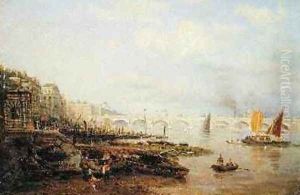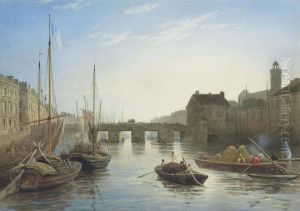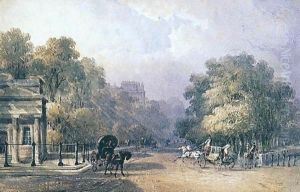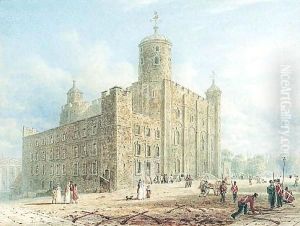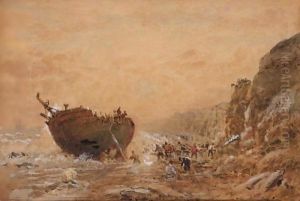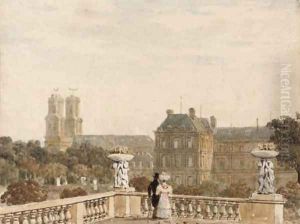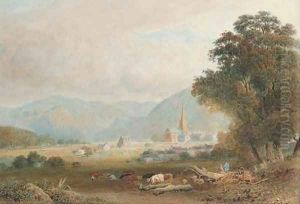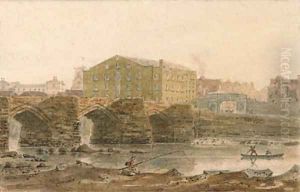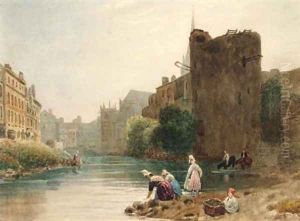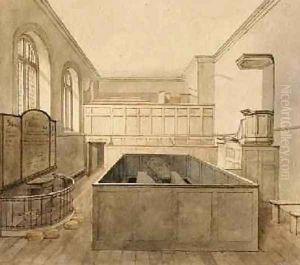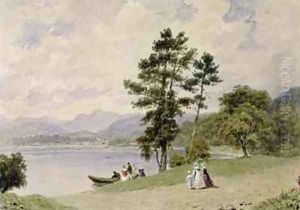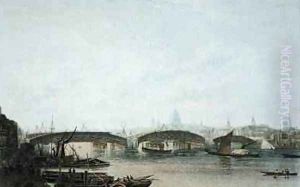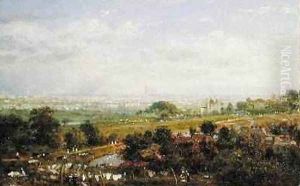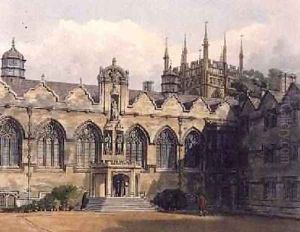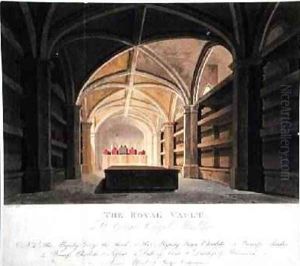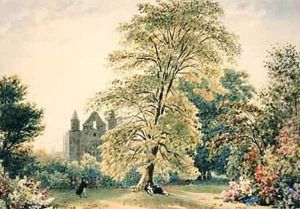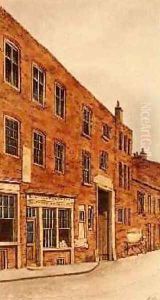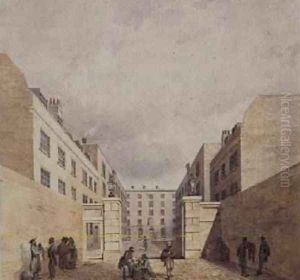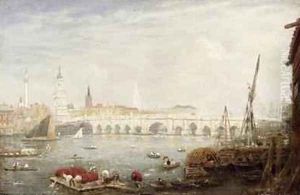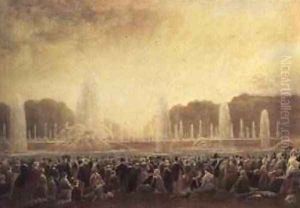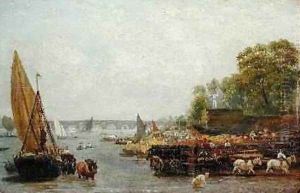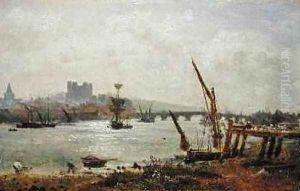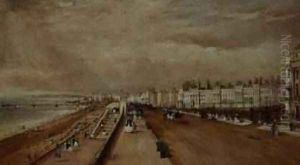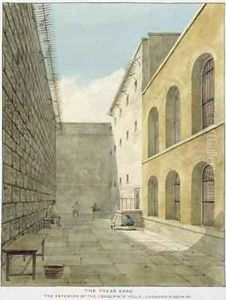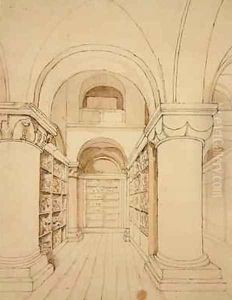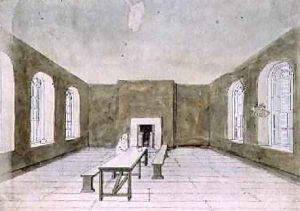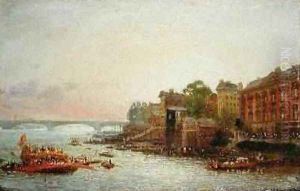Frederick Nash Paintings
Frederick Nash was an English painter and illustrator, known primarily for his architectural and landscape watercolours. Born on February 17, 1782, in Lambeth, London, he was the son of a successful carriage maker. Nash showed an early interest in art and was apprenticed to the architectural draughtsman and watercolourist Thomas Malton in 1798. Under Malton, Nash developed his skill in accurately depicting buildings in perspective.
After his apprenticeship, Nash became a drawing master and established himself as a professional artist. He was elected an Associate of the Old Water-Colour Society in 1808 and became a full member in 1810, actively contributing to the Society's exhibitions. Nash's work often featured medieval and Gothic architecture, capturing the romantic spirit of his time. He also painted scenes from his extensive travels within the United Kingdom and on the Continent.
Nash's illustrations were highly sought after and were used in books such as 'Views of the Most Interesting Collegiate and Parochial Churches in Great Britain,' which further established his reputation as a topographical artist. Amidst his travels, he took a particular interest in the picturesque ruins and landscapes of Wales, which became a frequent subject of his watercolours.
During the 1820s, Nash was commissioned to produce a series of views of Windsor Castle, and these works are considered among his finest. His attention to detail and ability to render the play of light and shadow on stone surfaces were particularly admired. Later in his career, Nash was also involved in the restoration projects of medieval buildings, where his knowledge of Gothic architecture was valuable.
Frederick Nash's contribution to English watercolour painting and topographical illustration was significant during the early 19th century. His work was characterized by a combination of architectural precision and atmospheric effect, which appealed to the sensibilities of the Romantic era. Nash died on December 5, 1856, in Brighton, leaving an enduring legacy as an artist who captured the beauty and grandeur of architecture within the British landscape.
